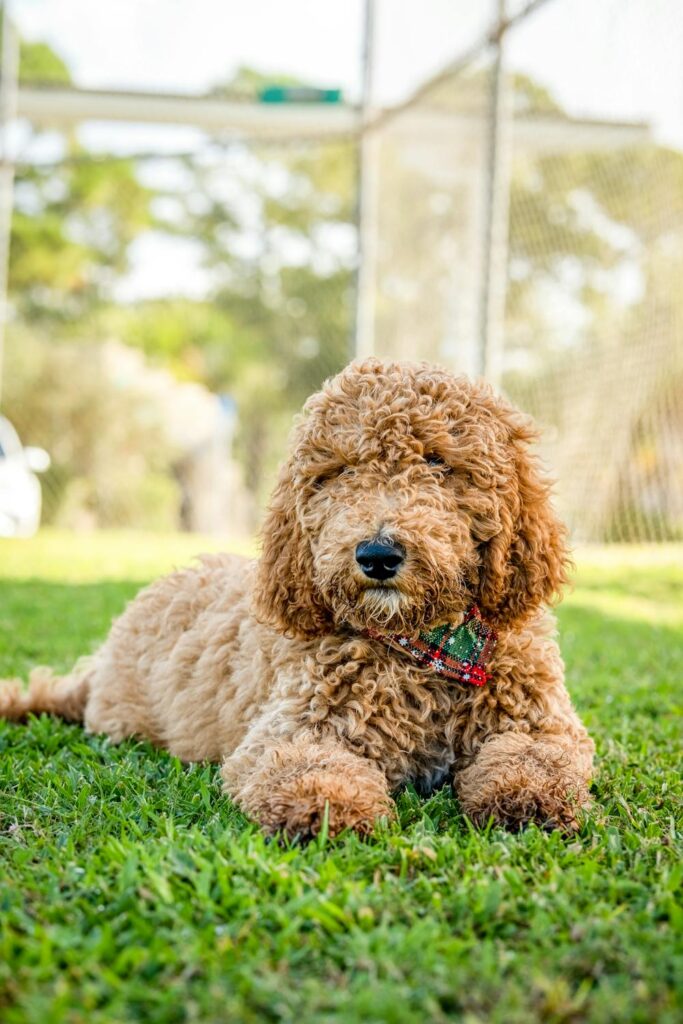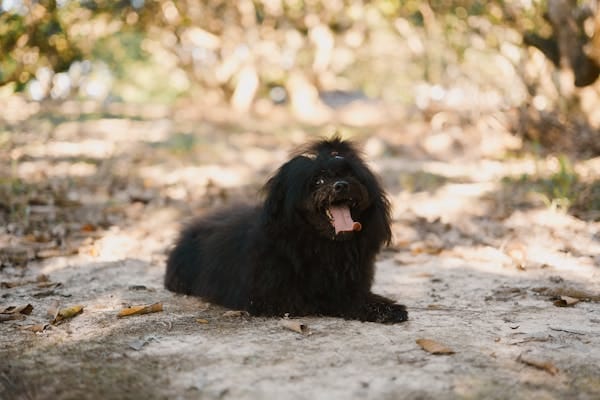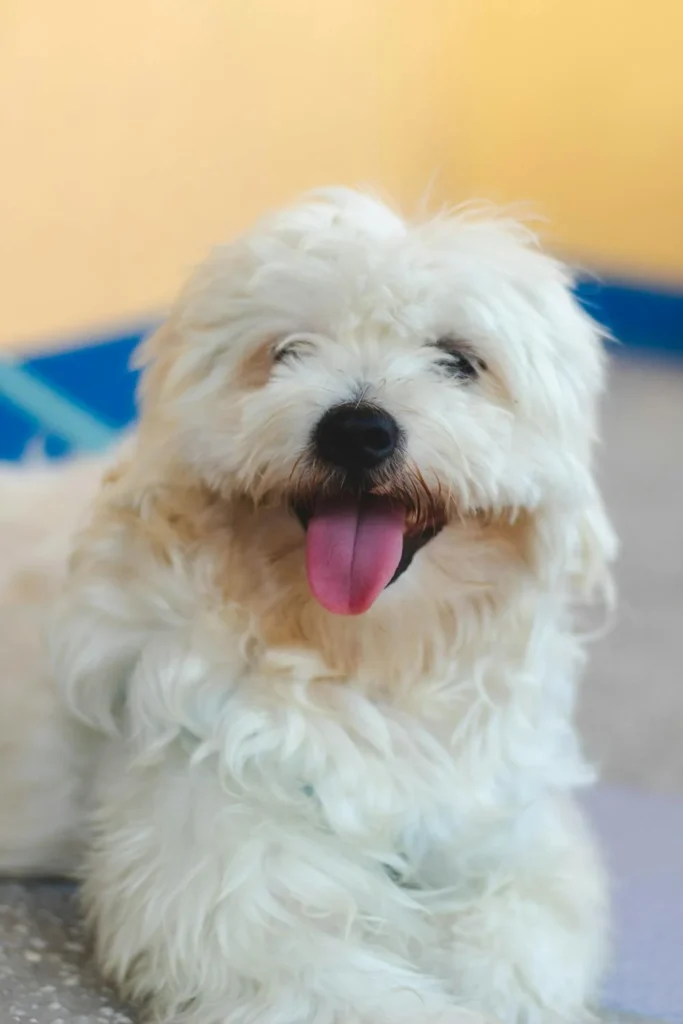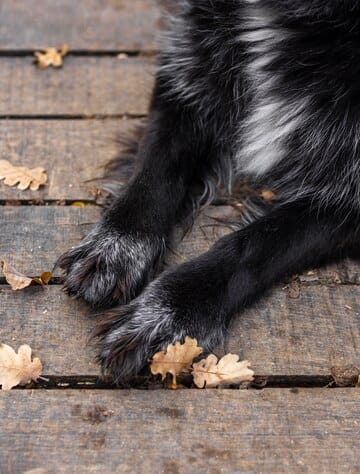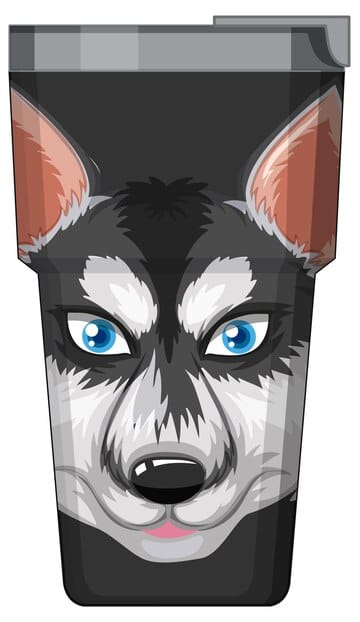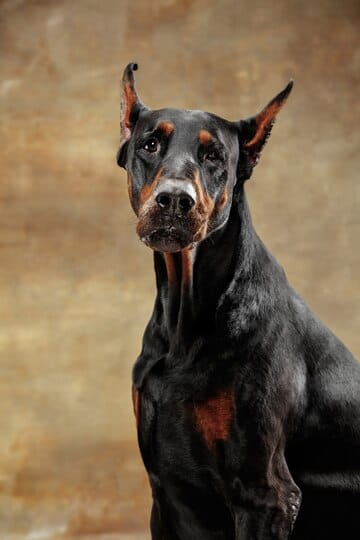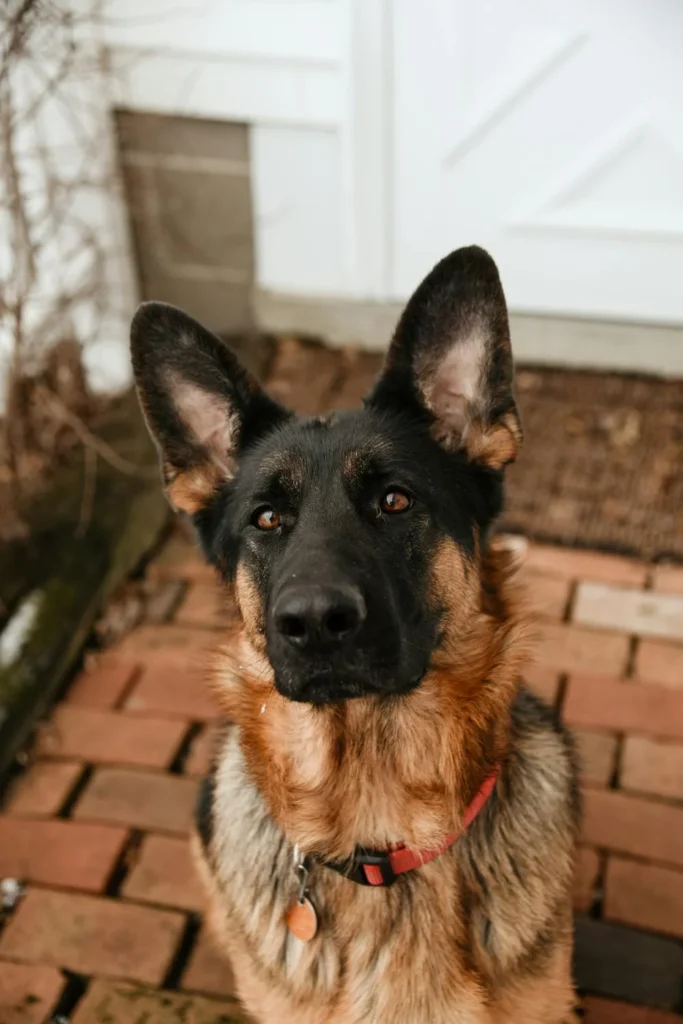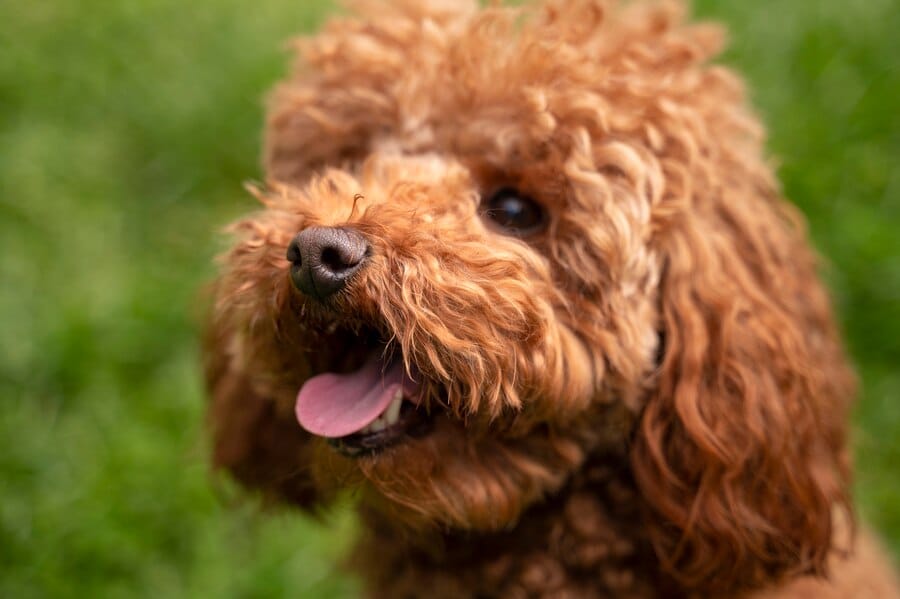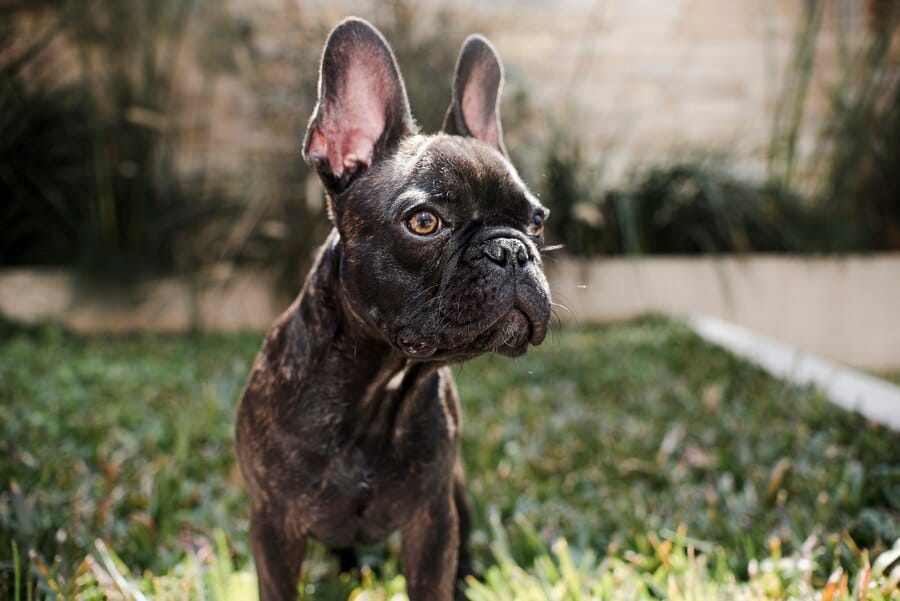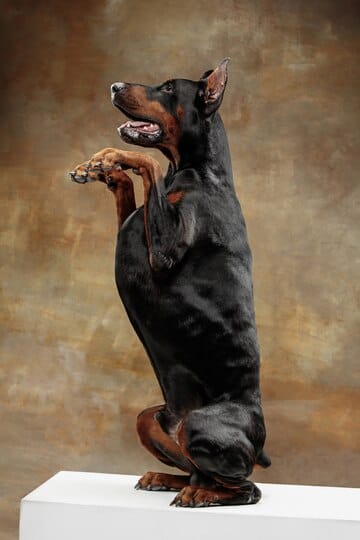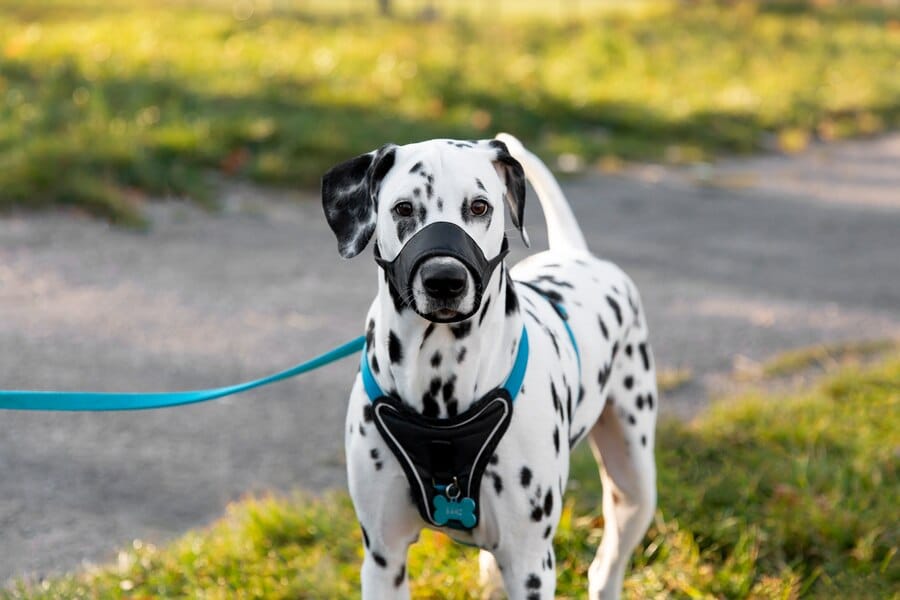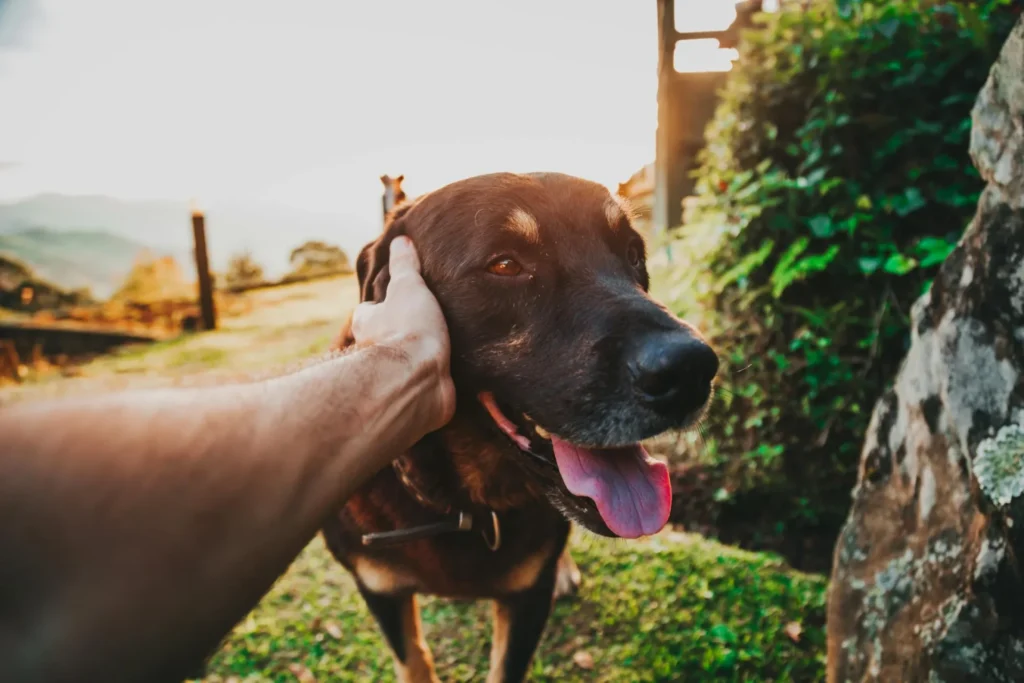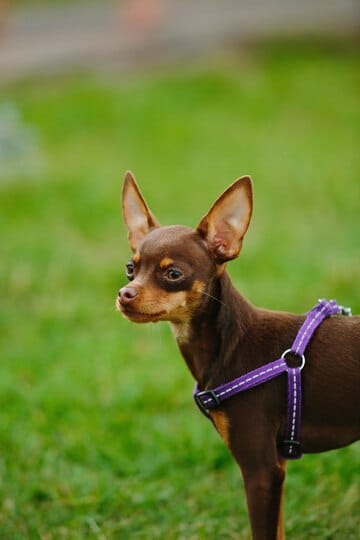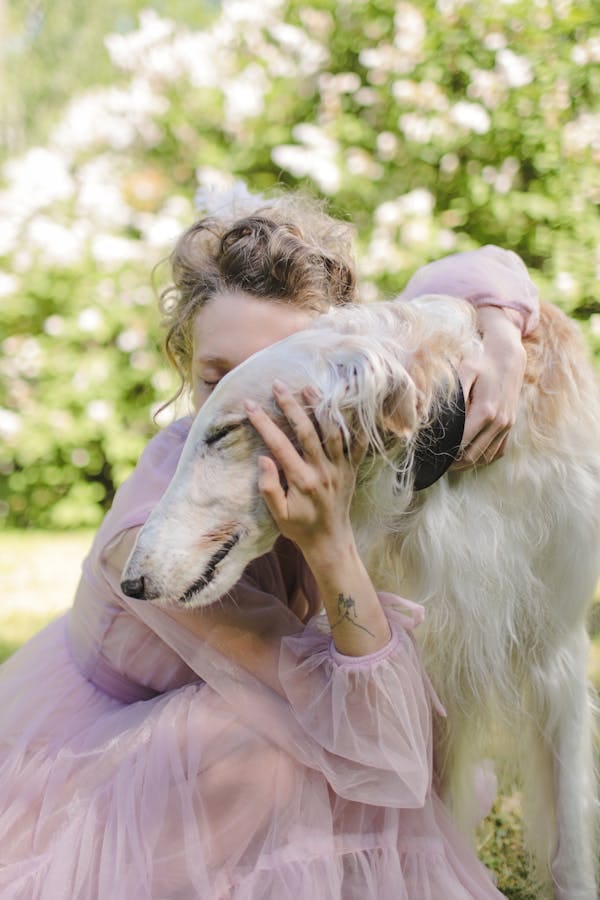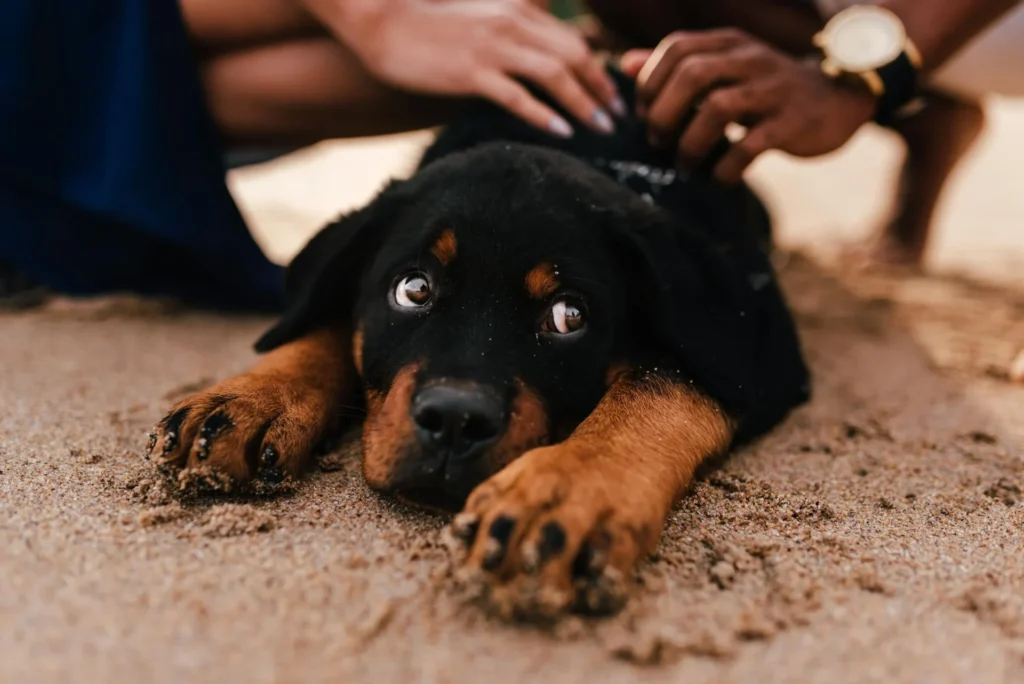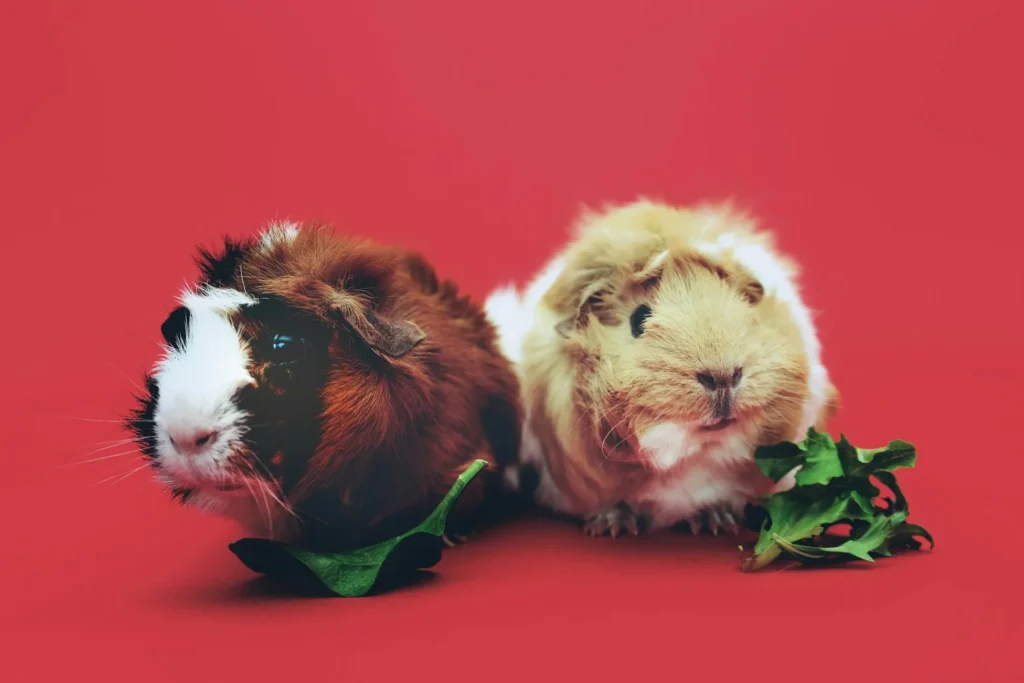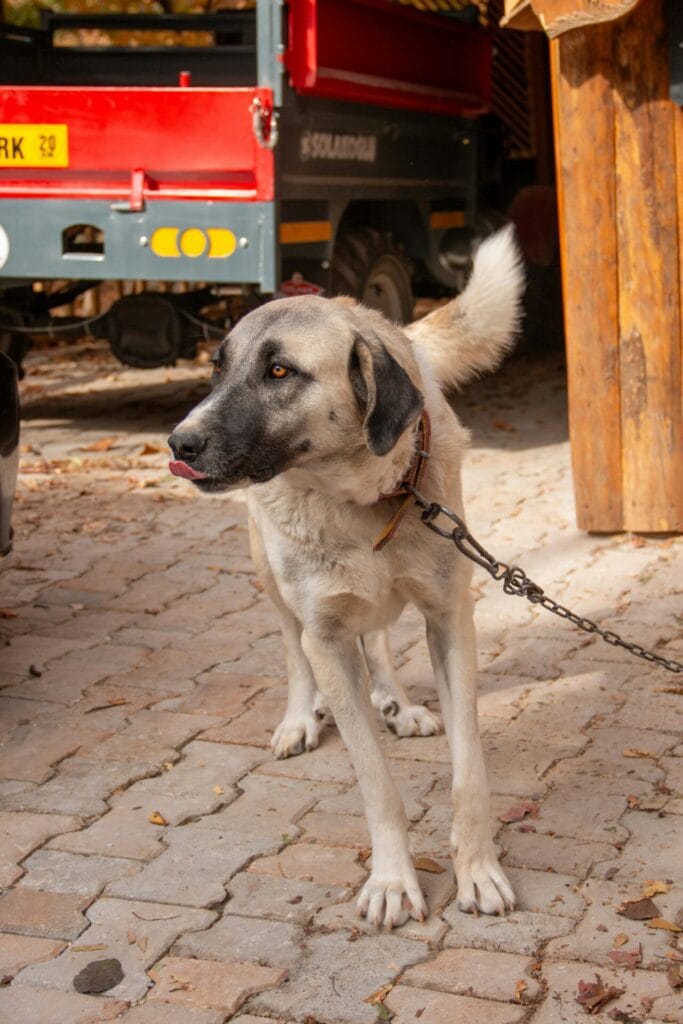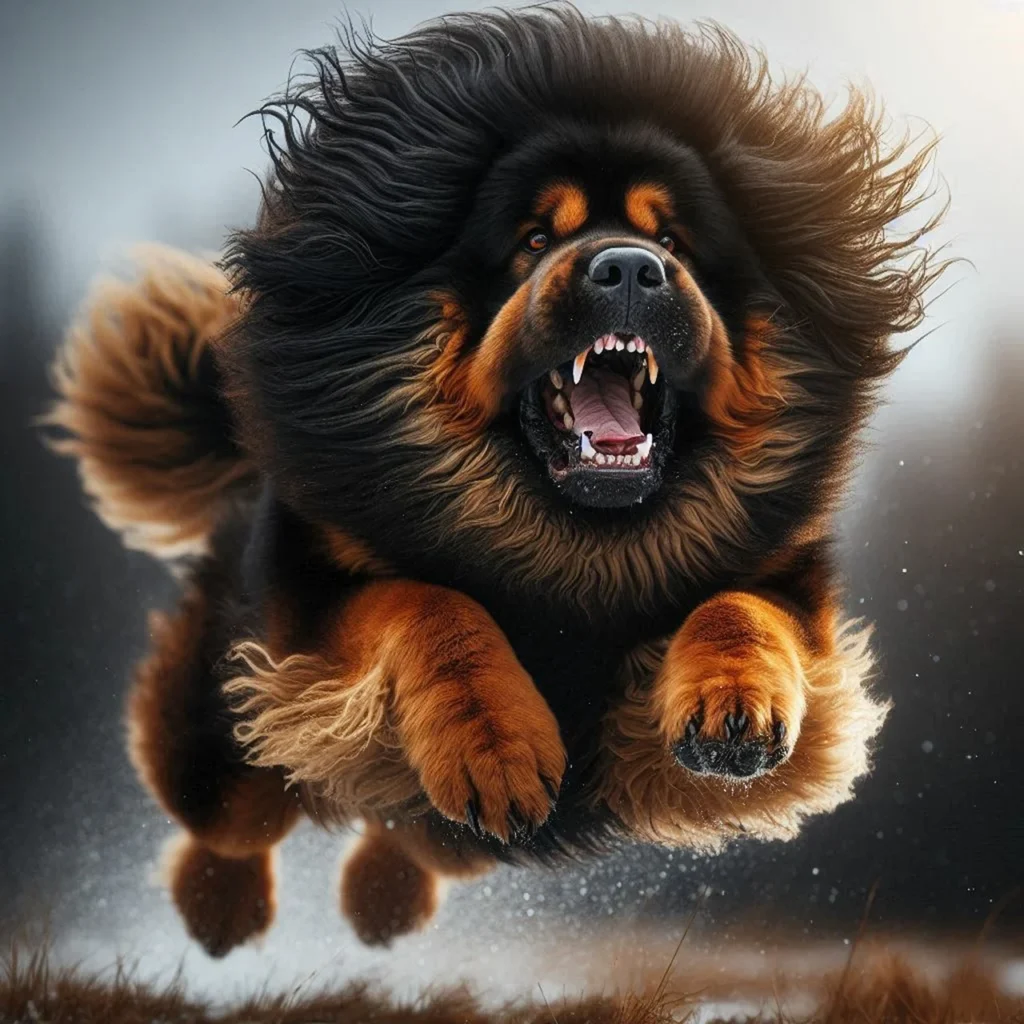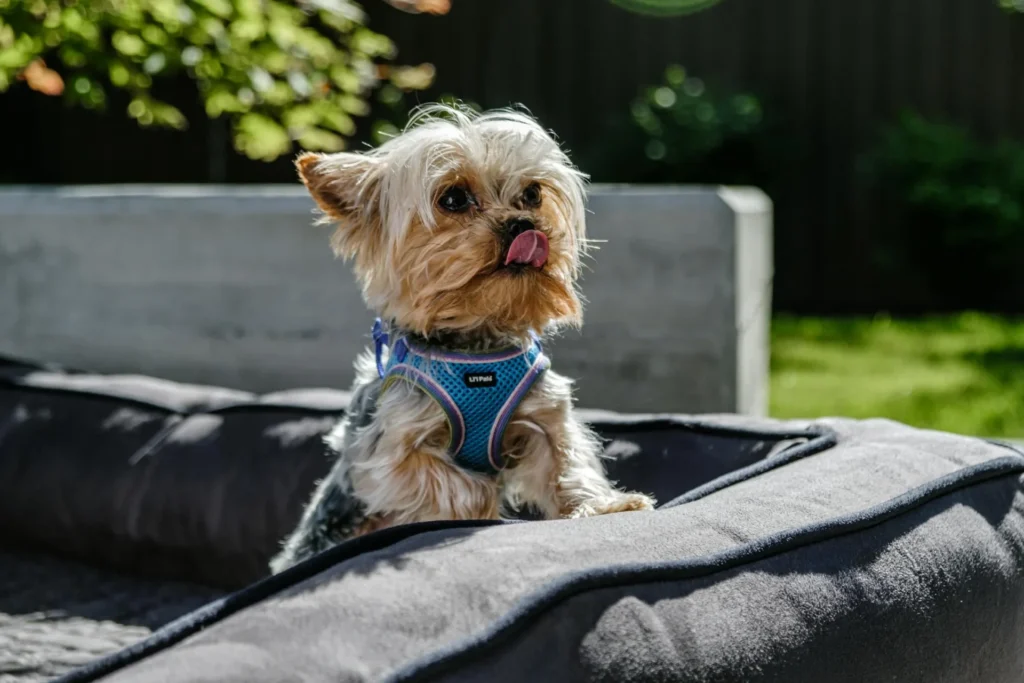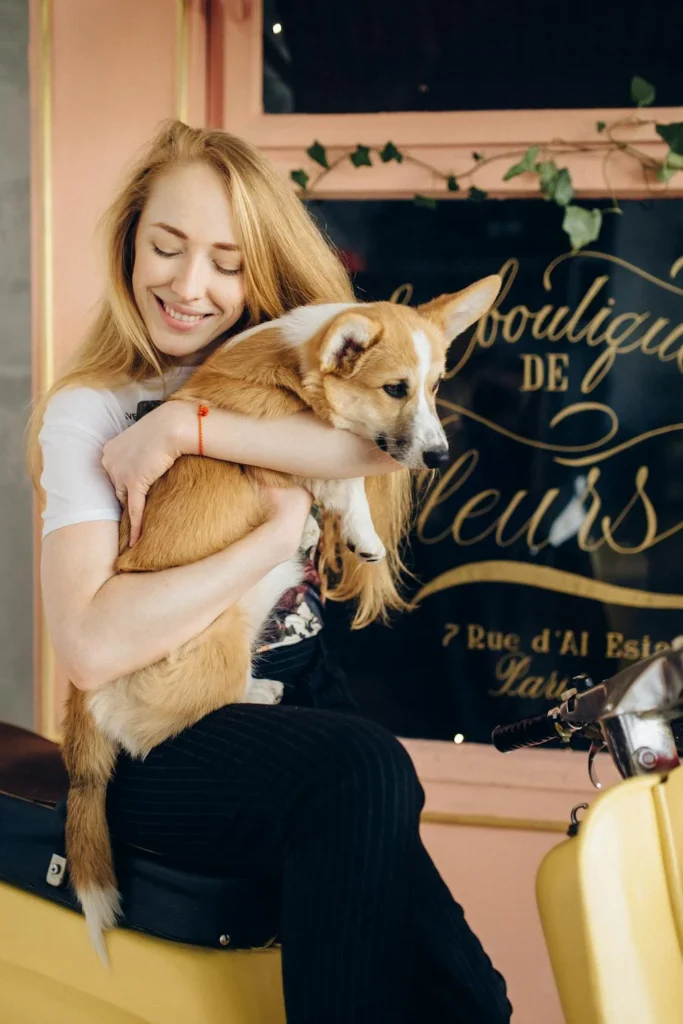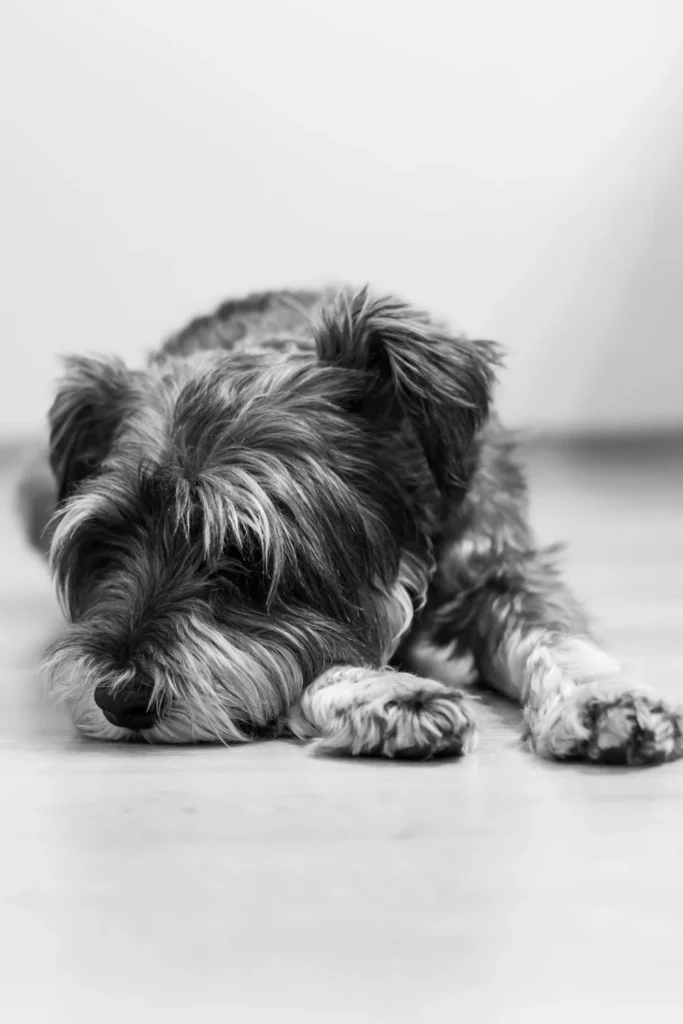- Introduction: Unraveling the Poodle’s Coat Mystery 🕵️♂️
- The Poodle Coat: A Closer Look 🔍
- Do Poodles Shed? The Simple Answer 🤔
- Shedding Patterns in Different Poodle Sizes 📏
- The Puppy Coat Phenomenon 🐾
- Why Is My Poodle Shedding? Causes and Concerns 🚨
- Normal vs. Abnormal Shedding: What to Watch For 🕵️♀️
- The Poodle Grooming Guide: Keeping Shedding at Bay 💇♀️
- Nutrition and Shedding: The Hidden Connection 🍽️
- Environmental Factors Affecting Poodle Coats 🌍
- Poodle Coat Care Products: What Works Best 🛍️
- Poodle Shedding vs. Other Breeds: A Comparison 🐕
- The Hypoallergenic Myth: Debunking Poodle Misconceptions 🧬
- Seasonal Shedding in Poodles: Fact or Fiction? 🌸🍁
- Dealing with Poodle Hair in Your Home 🏠
- Health Issues That Can Affect Poodle Coats 🩺
- The Psychology of Poodle Grooming: Bonding Through Brushing 💕
- Poodle Coat Genetics: A Scientific Perspective 🧬
- Grooming Tools: Your Arsenal Against Shedding 🧰
- Professional Grooming vs. DIY: Pros and Cons ⚖️
- Poodle Coat Myths: Separating Fact from Fiction 🕵️♂️
- FAQs: Your Burning Poodle Shedding Questions Answered 🔥
- Conclusion: Embracing Your Poodle’s Unique Coat 🎉
Introduction: Unraveling the Poodle’s Coat Mystery 🕵️♂️
Poodles, with their regal appearance and intelligent eyes, have captivated dog lovers for centuries. But there’s one question that keeps popping up in the minds of potential poodle parents and even seasoned owners: Do poodles shed? 🤔
In this comprehensive guide, we’ll dive deep into the world of poodle coats, exploring everything from the basics of their unique fur to advanced grooming techniques. Whether you’re wondering about standard poodles, miniature poodles, toy poodles, or even teacup poodles, we’ve got you covered. So, let’s embark on this hairy adventure and unravel the mysteries of poodle shedding! 🚀

The Poodle Coat: A Closer Look 🔍
Before we dive into the shedding specifics, let’s take a moment to appreciate the marvel that is the poodle coat. Poodles don’t just have hair; they have a coat that’s more like a work of art! 🎨
The Structure of Poodle Hair
Poodle hair is unique in the canine world. Unlike most dogs that have a double coat (an undercoat and a top coat), poodles have a single layer of hair that grows continuously. This hair is dense, curly, and often described as wool-like. 🐑
Here’s a breakdown of the poodle coat structure:
- Cuticle: The outer layer of the hair shaft, acting as a protective barrier.
- Cortex: The middle layer, providing strength and determining the hair’s color.
- Medulla: The innermost layer, which can be absent in some poodle hairs.
This unique structure contributes to the poodle’s reputation as a low-shedding breed. The tight curls of their coat tend to catch loose hairs, holding them in place instead of allowing them to fall freely around your home. 🏠
Poodle Coat Types
Not all poodle coats are created equal. There are several types of poodle coats, each with its own characteristics:
- Puppy Coat: Soft, fluffy, and relatively straight.
- Adult Coat: Coarser, curlier, and denser than the puppy coat.
- Corded Coat: A style where the hair is allowed to form long, rope-like cords.
- Curly Coat: The most common type, with tight, small curls.
- Wavy Coat: Less curly than the standard coat, with a more relaxed wave.
Understanding these coat types is crucial in managing your poodle’s shedding and grooming needs. 💇♀️
Do Poodles Shed? The Simple Answer 🤔
Now, let’s address the million-dollar question: Do poodles shed? The answer is… yes and no. 😮
Poodles do shed, but not in the way most people think of shedding. Unlike dogs that “blow their coat” seasonally, leaving tufts of fur around your home, poodles shed very minimally and continuously. Their hair growth cycle is longer than that of many other breeds, which means individual hairs stay in place longer before falling out.
Here’s a quick comparison:
| Breed Type | Shedding Pattern | Amount of Shedding |
|---|---|---|
| Poodles | Continuous, minimal | Very low ⭐ |
| Labrador Retrievers | Seasonal, heavy | High ⭐⭐⭐⭐⭐ |
| German Shepherds | Continuous, heavy | Very high ⭐⭐⭐⭐⭐ |
| Chihuahuas | Continuous, moderate | Moderate ⭐⭐⭐ |
This minimal shedding is one of the reasons poodles are often recommended for people with allergies. However, it’s important to note that no dog is truly 100% hypoallergenic. We’ll dive deeper into this topic later in the article. 🤧
Shedding Patterns in Different Poodle Sizes 📏
Poodles come in various sizes, from the tiny teacup to the majestic standard. But does size matter when it comes to shedding? Let’s break it down:
Standard Poodles 🐩
Standard poodles, standing over 15 inches tall at the shoulder, have the most hair simply due to their larger size. However, their shedding pattern remains minimal.
Shedding Rate: ⭐⭐ (out of 5)
Miniature Poodles 🐩
Miniature poodles, between 10-15 inches tall, have a similar coat to their larger counterparts but in a more compact package.
Shedding Rate: ⭐⭐ (out of 5)
Toy Poodles 🐩
Toy poodles, under 10 inches tall, have the same low-shedding coat in an even smaller size.
Shedding Rate: ⭐ (out of 5)
Teacup Poodles 🍵
Teacup poodles, while not officially recognized as a size by kennel clubs, are essentially very small toy poodles. Their shedding is minimal, but their tiny size means even less hair overall.
Shedding Rate: ⭐ (out of 5)
While the shedding rate is similar across all sizes, the amount of hair shed will naturally be less in smaller poodles simply because they have less hair overall. However, this doesn’t mean they require less grooming – in fact, smaller poodles often need more frequent grooming to prevent matting. 🪮
The Puppy Coat Phenomenon 🐾
If you’ve ever raised a poodle puppy, you might have noticed a change in their coat as they grow. This isn’t your imagination – it’s a natural process called “coat change.”
What is a Puppy Coat?
A puppy coat is the soft, fluffy fur that poodles are born with. It’s typically:
- Softer than adult fur
- Straighter or with loose waves
- Easier to manage and less prone to matting
The Coat Change Process
Around 6-9 months of age, poodles begin to transition from their puppy coat to their adult coat. This process can last several months and may involve:
- Increased shedding 🌪️
- Changes in coat texture 🧵
- More frequent matting 🧶
- Color changes in some cases 🎨
During this time, you might notice more hair on your clothes or around your home. Don’t panic! This is normal and temporary.
Managing the Coat Change
To help your poodle through this transition:
- Increase grooming frequency: Brush your poodle daily to remove loose hairs and prevent matting.
- Be gentle: The new coat growing in can make your poodle’s skin more sensitive.
- Consider a shorter cut: A puppy clip can make the transition easier to manage.
- Be patient: Remember, this is a natural process. Your poodle’s gorgeous adult coat is on its way!
Why Is My Poodle Shedding? Causes and Concerns 🚨
While poodles are known for their minimal shedding, there are times when you might notice more hair loss than usual. Here are some potential causes:
- Seasonal Changes 🌞❄️
- Even poodles can experience slight increases in shedding during spring and fall.
- Stress 😰
- Major life changes, loud noises, or other stressors can cause temporary increased shedding.
- Diet 🍖
- Poor nutrition can lead to a dull, brittle coat that sheds more easily.
- Health Issues 🏥
- Hormonal imbalances, allergies, or skin conditions can cause excessive shedding.
- Parasites 🐛
- Fleas, ticks, or mites can cause skin irritation leading to hair loss.
- Age 👵
- As poodles get older, their coat may thin, leading to more noticeable shedding.
- Pregnancy or Lactation 🤰
- Hormonal changes can affect coat health and shedding patterns.
- Medications 💊
- Some medications may have side effects that include increased shedding.
If you notice a sudden increase in shedding, especially if accompanied by other symptoms like skin irritation or changes in behavior, it’s best to consult with your veterinarian. 👨⚕️
Normal vs. Abnormal Shedding: What to Watch For 🕵️♀️
Understanding the difference between normal and excessive shedding is crucial for maintaining your poodle’s health. Here’s a handy comparison:
| Normal Shedding | Abnormal Shedding |
|---|---|
| Minimal, consistent hair loss | Sudden increase in hair loss |
| No bald patches | Bald patches or thinning areas |
| Healthy, shiny coat | Dull, brittle, or oily coat |
| No skin irritation | Red, inflamed, or itchy skin |
| No change in behavior | Excessive scratching or licking |
If you notice any signs of abnormal shedding, it’s time to take action. This might include:
- Reviewing your grooming routine 🧼
- Checking for parasites 🔍
- Evaluating your poodle’s diet 🥩
- Consulting with your veterinarian 👩⚕️
Remember, early intervention can prevent minor issues from becoming major problems!
The Poodle Grooming Guide: Keeping Shedding at Bay 💇♀️
Proper grooming is the key to managing your poodle’s shedding and maintaining a healthy coat. Here’s a comprehensive grooming routine to keep your poodle looking and feeling their best:
Daily Grooming 📅
- Brushing: Use a slicker brush to gently work through your poodle’s coat, removing any loose hairs and preventing matting. 🧹
- Check for skin issues: Look for any redness, bumps, or irritation. 🔍
- Eye and ear cleaning: Wipe around the eyes and check ears for any signs of infection. 👀👂
Weekly Grooming 🗓️
- Bathing: Use a dog-specific shampoo to keep your poodle’s coat clean and healthy. 🛁
- Nail trimming: Keep nails short to prevent discomfort and potential injuries. ✂️
- Teeth brushing: Maintain good oral hygiene to prevent dental issues. 🦷
Monthly Grooming 📆
- Professional grooming: Consider a trip to a professional groomer for a thorough cut and style. 💈
- Anal gland check: Have your vet or groomer check and express anal glands if necessary. 🩺
Seasonal Grooming 🌸🍁
- Coat trimming: Adjust your poodle’s cut based on the season – shorter in summer, longer in winter. ☀️❄️
- Flea and tick prevention: Update preventative treatments as recommended by your vet. 🐞
Remember, consistency is key in grooming. A well-maintained coat sheds less and looks fantastic! 🌟
Nutrition and Shedding: The Hidden Connection 🍽️
You are what you eat, and for poodles, this saying extends to their coat health. A balanced diet plays a crucial role in minimizing shedding and maintaining a lustrous coat. Let’s explore the nutritional needs of your poodle:
Essential Nutrients for a Healthy Coat 🥩🐟🥚
- Protein: The building block of hair. Look for high-quality animal proteins.
- Omega-3 and Omega-6 Fatty Acids: Promote skin health and coat shine.
- Vitamins A and E: Support skin cell regeneration and oil production.
- Biotin: Strengthens hair follicles and promotes growth.
- Zinc: Crucial for protein synthesis and cell division in hair growth.
Foods That Promote Coat Health 🍗🥗
- Salmon 🐟
- Chicken 🍗
- Eggs 🥚
- Sweet potatoes 🍠
- Blueberries 🫐
- Spinach 🥬
Foods to Avoid ⚠️
- Excessive grains 🌾
- Artificial preservatives 🚫
- Low-quality fillers 👎
Hydration is Key 💧
Ensure your poodle always has access to fresh, clean water. Proper hydration supports skin health and can reduce shedding.
Remember, any significant changes to your poodle’s diet should be discussed with your veterinarian. They can help you create a nutrition plan tailored to your poodle’s specific needs. 👨⚕️🐩
Environmental Factors Affecting Poodle Coats 🌍
Your poodle’s environment plays a significant role in their coat health and shedding patterns. Let’s explore some key environmental factors:
- Temperature 🌡️
- Extreme heat or cold can stress your poodle’s skin and coat.
- In hot weather, poodles may shed more to stay cool.
- In cold weather, their coat might become dry and brittle.
- Humidity 💧
- High humidity can lead to skin infections and increased shedding.
- Low humidity can cause dry skin and static electricity in the coat.
- Allergens 🌼
- Pollen, dust, and other allergens can irritate your poodle’s skin.
- This irritation may lead to scratching and increased shedding.
- Sun Exposure ☀️
- Too much sun can damage your poodle’s skin and lighten their coat color.
- Provide shade and consider pet-safe sunscreen for prolonged outdoor time.
- Indoor Air Quality 🏠
- Poor ventilation and air pollutants can affect coat health.
- Regular cleaning and air purifiers can help maintain a healthy environment.
To combat these environmental challenges:
- Adjust grooming routines seasonally 🗓️
- Use humidifiers or dehumidifiers as needed 💨
- Keep your home clean to reduce allergens 🧹
- Provide appropriate shelter outdoors ⛱️
Poodle Coat Care Products: What Works Best 🛍️
With so many pet care products on the market, it can be overwhelming to choose the right ones for your poodle. Here’s a guide to help you select the best products for maintaining your poodle’s coat and minimizing shedding:
Shampoos and Conditioners 🧴
- Moisturizing Shampoo: Look for products with natural oils like coconut or jojoba.
- Detangling Conditioner: Essential for preventing matting and reducing shedding.
- Medicated Shampoo: For poodles with skin issues (consult your vet first).
Top Picks:
- 🌟 Earthbath Oatmeal & Aloe Pet Shampoo
- 🌟 TropiClean PerfectFur Curly & Wavy Coat Shampoo
Brushes and Combs 🧹
- Slicker Brush: Perfect for removing loose hair and detangling.
- Metal Comb: For working through stubborn knots and mats.
- Pin Brush: Gentle enough for daily use on sensitive skin.
Top Picks:
- 🌟 Chris Christensen Big G Slicker Brush
- 🌟 Andis Steel Greyhound Comb
Leave-In Conditioners and Sprays 💦
- Detangling Spray: Makes brushing easier and reduces breakage.
- Coat Oil: Adds shine and moisturizes the skin.
Top Picks:
- 🌟 The Stuff Conditioner & Detangler
- 🌟 Warren London Hydrating Butter Leave-In Conditioner
Supplements 💊
- Omega-3 Supplements: Promote skin health and coat shine.
- Biotin Supplements: Support healthy hair growth.
Top Picks:
- 🌟 Zesty Paws Omega Bites
- 🌟 Pet Parents Coat & Allergy Support Chews
Remember, what works for one poodle may not work for another. It’s always best to test new products on a small area first and consult with your veterinarian or professional groomer if you have concerns. 🐩👨⚕️
Poodle Shedding vs. Other Breeds: A Comparison 🐕
To truly appreciate the low-shedding nature of poodles, let’s compare them to some other popular dog breeds:
| Breed | Shedding Level | Grooming Needs | Allergen Production |
|---|---|---|---|
| Poodle | ⭐ (Very Low) | 🧼🧼🧼🧼🧼 (High) | 🤧 (Low) |
| Labrador Retriever | ⭐⭐⭐⭐⭐ (Very High) | 🧼🧼 (Moderate) | 🤧🤧🤧 (High) |
| German Shepherd | ⭐⭐⭐⭐⭐ (Very High) | 🧼🧼🧼 (Moderate-High) | 🤧🤧🤧🤧 (Very High) |
| Chihuahua | ⭐⭐⭐ (Moderate) | 🧼 (Low) | 🤧🤧 (Moderate) |
| Siberian Husky | ⭐⭐⭐⭐⭐ (Very High) | 🧼🧼🧼 (Moderate-High) | 🤧🤧🤧🤧 (Very High) |
| Yorkshire Terrier | ⭐ (Very Low) | 🧼🧼🧼🧼 (High) | 🤧 (Low) |
As you can see, poodles stand out for their minimal shedding, though they do require more grooming than some other breeds. This trade-off is often worth it for allergy sufferers or those who prefer a cleaner home. 🏠✨
The Hypoallergenic Myth: Debunking Poodle Misconceptions 🧬
Poodles are often touted as “hypoallergenic” dogs, but it’s time to set the record straight. Here’s what you need to know:
- No dog is truly hypoallergenic 🚫
- All dogs produce some level of allergens.
- Allergens aren’t just in fur 🦠
- They’re also found in dander, saliva, and urine.
- Poodles produce fewer allergens 📉
- Their low-shedding coat means less dander spread around.
- Individual reactions vary 👤
- Some people may still be allergic to poodles.
- Regular grooming reduces allergens 🧼
- Frequent baths and brushing can help minimize allergen spread.
While poodles aren’t completely hypoallergenic, they’re often a good choice for allergy sufferers. Always spend time with a poodle before bringing one home if you have allergies. 🏠🐩
Seasonal Shedding in Poodles: Fact or Fiction? 🌸🍁
Many dog owners are familiar with the concept of seasonal shedding, but does this apply to poodles? Let’s break it down:
The Myth 🗣️
Poodles don’t experience seasonal shedding like other breeds.
The Reality ✅
While poodles don’t “blow their coat” seasonally like some breeds, they can experience slight increases in hair loss during certain times of the year.
Factors Influencing Seasonal Changes 🔍
- Daylight Hours: Changes in daylight can affect hormone production and hair growth cycles.
- Temperature: Extreme heat or cold can stress the skin and coat.
- Humidity: Dry air in winter or high humidity in summer can affect coat health.
What to Expect 📅
- Spring: Slight increase in shedding as winter coat is replaced.
- Summer: Minimal shedding, but watch for sun damage.
- Fall: Another small increase as summer coat is shed.
- Winter: Dryer air may lead to more static and apparent hair loss.
Managing Seasonal Changes 💪
- Adjust grooming routine seasonally 🧼
- Use a humidifier in dry months 💨
- Provide extra protection in extreme weather ☂️
- Monitor for any unusual changes 🔍
Remember, while poodles may experience some seasonal variation, it’s typically much less noticeable than in heavy-shedding breeds. Any dramatic changes should be discussed with your veterinarian. 👨⚕️
Dealing with Poodle Hair in Your Home 🏠
Even with their low-shedding nature, poodle owners still need strategies to keep their homes clean. Here are some tips:
- Regular Vacuuming 🧹
- Use a vacuum with a HEPA filter for best results.
- Aim for 2-3 times a week in high-traffic areas.
- Invest in a Robot Vacuum 🤖
- Great for daily maintenance between deep cleans.
- Use Lint Rollers 🧻
- Keep them handy for quick touch-ups on clothing and furniture.
- Washable Slipcovers 🛋️
- Protect furniture and wash regularly.
- Air Purifiers 💨
- Help remove airborne hair and dander.
- Groom Outdoors When Possible 🌳
- Brush your poodle outside to prevent loose hair from entering your home.
- Use Doormats 🚪
- Place them at entrances to catch hair and debris from paws.
- Regular Bathing 🛁
- Helps reduce loose hair before it falls in your home.
- Microfiber Cloths 🧽
- Great for quick dusting and picking up stray hairs.
- Keep Your Poodle Off Furniture 🛑
- If possible, train your poodle to stay off furniture to reduce hair spread.
Remember, a little regular maintenance goes a long way in keeping your home hair-free! 🏆
Health Issues That Can Affect Poodle Coats 🩺
While poodles are generally healthy dogs, certain health issues can impact their coat and shedding patterns. Being aware of these can help you catch potential problems early:
- Hypothyroidism 🦋
- Symptoms: Excessive shedding, dry skin, hair loss
- Treatment: Thyroid hormone replacement therapy
- Cushing’s Disease 🐾
- Symptoms: Hair loss, thin skin, increased thirst and urination
- Treatment: Medication or surgery, depending on the cause
- Allergies 🤧
- Symptoms: Itching, redness, hair loss from excessive scratching
- Treatment: Identifying and removing allergen, medication if necessary
- Sebaceous Adenitis 🦠
- Symptoms: Hair loss, scaly skin, musty odor
- Treatment: Medicated shampoos, immune-modulating drugs
- Skin Infections 🔬
- Symptoms: Redness, itching, hair loss, odor
- Treatment: Antibiotics or antifungal medications
- Alopecia 👨🦲
- Symptoms: Patchy or complete hair loss
- Treatment: Depends on underlying cause
- Hormonal Imbalances ⚖️
- Symptoms: Changes in coat texture, excessive shedding
- Treatment: Hormone therapy or addressing underlying cause
If you notice any unusual changes in your poodle’s coat or shedding patterns, consult with your veterinarian promptly. Early detection and treatment can prevent more serious issues and keep your poodle’s coat healthy and beautiful. 🏥🐩
The Psychology of Poodle Grooming: Bonding Through Brushing 💕
Grooming isn’t just about maintaining your poodle’s coat – it’s also an opportunity for bonding and mental stimulation. Let’s explore the psychological benefits:
- Stress Relief 😌
- Regular grooming can be calming for both you and your poodle.
- Trust Building 🤝
- Gentle handling during grooming strengthens your bond.
- Positive Association 🎉
- Use treats and praise to make grooming a rewarding experience.
- Early Detection 🔍
- Regular grooming allows you to spot health issues early.
- Mental Stimulation 🧠
- Grooming engages your poodle’s mind and senses.
- Routine and Structure 📅
- Regular grooming sessions provide a sense of stability.
- Touch Therapy 🤗
- Physical contact during grooming releases feel-good hormones.
Tips for Positive Grooming Experiences:
- Start grooming sessions when your poodle is calm 😴
- Use gentle, reassuring tones 🗣️
- Take breaks if your poodle seems stressed 🛑
- End on a positive note with a favorite activity 🎾
Remember, patience is key. With time and positive reinforcement, most poodles learn to enjoy their grooming sessions. It’s not just about maintaining their coat – it’s about strengthening your bond and ensuring your poodle’s overall well-being. 🐾❤️
Poodle Coat Genetics: A Scientific Perspective 🧬
Understanding the genetics behind your poodle’s coat can provide insights into their shedding patterns and overall coat health. Let’s dive into the science:
Key Genes Affecting Poodle Coats 🔬
- KRT71 Gene
- Responsible for the curly coat texture
- Mutations in this gene can lead to a softer, more wavy coat
- FGF5 Gene
- Influences hair length
- Mutations can result in longer hair growth phases
- RSPO2 Gene
- Affects furnishings (longer hair on face and legs)
- Poodles typically have two copies of the furnishing allele
- MC5R Gene
- Involved in sebum production
- Can affect coat oiliness and texture
Coat Color Genetics 🌈
Poodle coat colors are determined by several genes interacting:
- B Locus: Black vs. brown pigment
- D Locus: Intensity of pigment (dilution)
- E Locus: Extension of black pigment
- K Locus: Dominant black
- A Locus: Agouti (sable and tan patterns)
Genetic Health Considerations 🩺
Some genetic conditions can affect coat health:
- Sebaceous Adenitis: Autoimmune condition affecting sebaceous glands
- Color Dilution Alopecia: Hair loss in dogs with dilute coat colors
Understanding your poodle’s genetic makeup can help you:
- Predict potential coat issues 🔮
- Tailor grooming routines 🧼
- Make informed breeding decisions 🐕
While genetics play a crucial role, remember that environment and care also significantly impact your poodle’s coat health. A combination of good genes and excellent care leads to that beautiful, low-shedding poodle coat we all admire! 🏆🐩
Grooming Tools: Your Arsenal Against Shedding 🧰
Having the right tools can make a world of difference in managing your poodle’s coat and minimizing shedding. Let’s explore the essential grooming tools every poodle owner should have:
1. Slicker Brush 🧹
- Purpose: Removes loose hair and detangles
- How to use: Brush in the direction of hair growth, be gentle on sensitive areas
2. Metal Comb 🗝️
- Purpose: Works out mats and checks for tangles
- How to use: Start at the skin and work outward, be patient with knots
3. Dematting Tool ✂️
- Purpose: Safely removes stubborn mats
- How to use: Work slowly and carefully to avoid skin irritation
4. Grooming Scissors ✂️
- Purpose: Trimming and shaping coat
- How to use: Always point away from skin, use blunt-tipped scissors around sensitive areas
5. Clippers 💈
- Purpose: For overall coat trimming
- How to use: Start with a longer guard and work your way shorter
6. Grooming Table 🏓
- Purpose: Provides a stable surface for grooming
- How to use: Secure your poodle safely, adjust height for comfort
7. Nail Clippers 💅
- Purpose: Keep nails at a comfortable length
- How to use: Clip small amounts at a time, avoid the quick
8. Ear Cleaner 👂
- Purpose: Prevents ear infections
- How to use: Apply gently with a cotton ball, never insert into ear canal
9. Toothbrush and Toothpaste 🦷
- Purpose: Maintains dental health
- How to use: Use dog-specific toothpaste, brush gently in circular motions
10. Blow Dryer 💨
- Purpose: Dries coat after bathing
- How to use: Use low heat setting, keep moving to avoid skin irritation
Remember, quality tools make grooming easier and more effective. Invest in good equipment and maintain it well for the best results. 🛠️
Professional Grooming vs. DIY: Pros and Cons ⚖️
Deciding between professional grooming and doing it yourself is a common dilemma for poodle owners. Let’s weigh the pros and cons:
Professional Grooming 💇♀️
Pros:
- Expertise in handling different coat types 🏆
- Access to professional-grade tools and products 🧰
- Consistent, polished look 💅
- Time-saving for busy owners ⏰
- Early detection of skin issues or abnormalities 🔍
Cons:
- Can be expensive, especially for frequent visits 💰
- Potential stress for some dogs in unfamiliar environments 😰
- Less control over products used 🧴
- May require scheduling and transportation 🚗
DIY Grooming 🏠
Pros:
- Cost-effective in the long run 💲
- Strengthens bond with your poodle ❤️
- Flexibility in scheduling 📅
- Control over products and techniques used 🧼
- Comfortable environment for your poodle 🛋️
Cons:
- Requires significant time and effort 🕰️
- Learning curve for proper techniques 📚
- Initial investment in quality tools 🛒
- May not achieve the same polished look as professionals 🎨
Finding the Right Balance 🤝
Many poodle owners opt for a combination approach:
- Regular at-home maintenance grooming 🏠
- Professional grooming every 6-8 weeks for a thorough groom and style 💈
Remember, whether you choose professional grooming, DIY, or a combination, consistency is key to maintaining a healthy, low-shedding coat. 🔑
Poodle Coat Myths: Separating Fact from Fiction 🕵️♂️
Let’s debunk some common myths about poodle coats and shedding:
Myth 1: Poodles don’t shed at all ❌
Fact: Poodles do shed, but minimally. Their hair tends to fall back into the coat rather than around your home.
Myth 2: Poodles are completely hypoallergenic ❌
Fact: No dog is 100% hypoallergenic. Poodles produce less dander, making them a better choice for some allergy sufferers.
Myth 3: Poodles don’t need regular grooming ❌
Fact: Poodles require frequent grooming to prevent matting and maintain coat health.
Myth 4: Shaving a poodle will stop shedding ❌
Fact: Shaving doesn’t stop shedding and can actually damage the coat if not done properly.
Myth 5: Poodle puppies don’t shed ❌
Fact: Poodle puppies do shed their puppy coat as they mature.
Myth 6: All poodles have the same coat type ❌
Fact: Poodle coats can vary in texture and density, even within the same litter.
Myth 7: Frequent bathing will dry out a poodle’s skin ❌
Fact: With proper products, poodles can be bathed regularly without skin issues.
Myth 8: Color-changing in poodle coats is abnormal ❌
Fact: Many poodles experience color changes as they age, especially in lighter colors.
Myth 9: Poodles with health issues always shed more ❌
Fact: While health issues can cause increased shedding, not all shedding indicates a health problem.
Myth 10: Poodles don’t need protection from the sun ❌
Fact: Poodles, especially when clipped short, can benefit from sun protection.
By understanding these facts, you can better care for your poodle’s unique coat needs. Always consult with professionals for personalized advice. 🐩👨⚕️
FAQs: Your Burning Poodle Shedding Questions Answered 🔥
Let’s address some frequently asked questions about poodle shedding:
Q1: Do poodles shed more when stressed? 😰
A: Yes, stress can cause increased shedding in poodles. Maintain a calm environment and routine.
Q2: Can diet affect my poodle’s shedding? 🍽️
A: Absolutely! A balanced diet rich in omega-3 fatty acids can promote a healthy coat and reduce shedding.
Q3: How often should I bathe my poodle to control shedding? 🛁
A: Generally, every 3-4 weeks is sufficient. Over-bathing can lead to dry skin and more shedding.
Q4: Do poodle mixes shed less than purebreds? 🐕🦺
A: It depends on the mix. Some poodle mixes may shed more than purebred poodles.
Q5: Can hormonal changes affect my poodle’s shedding? 🤰
A: Yes, events like pregnancy or thyroid issues can impact shedding patterns.
Q6: Is it normal for my poodle to shed more in certain seasons? 🍁
A: Slight seasonal shedding can occur, but it’s typically less noticeable than in other breeds.
Q7: Can supplements help reduce my poodle’s shedding? 💊
A: Some supplements, like fish oil, can promote coat health. Consult your vet before starting any new supplements.
Q8: How can I tell if my poodle’s shedding is abnormal? 🚨
A: Excessive shedding, bald patches, or changes in coat texture warrant a vet visit.
Q9: Do different colored poodles shed differently? 🌈
A: Coat color doesn’t significantly affect shedding, but it can impact how noticeable the shed hair is.
Q10: Can regular brushing really make a difference in shedding? 🧹
A: Yes! Regular brushing removes loose hair before it falls and stimulates healthy coat growth.
Remember, every poodle is unique. If you have concerns about your poodle’s shedding, always consult with a veterinarian or professional groomer. 🏆
Conclusion: Embracing Your Poodle’s Unique Coat 🎉
As we wrap up our comprehensive guide to do poodles shed? Let’s recap the key points:
- Poodles are low-shedding, but not completely non-shedding dogs. 🐾
- Regular grooming is essential for maintaining a healthy, low-shedding coat. 🧼
- Diet, environment, and overall health play crucial roles in coat condition. 🥩🏠🩺
- While poodles are often good for allergy sufferers, no dog is truly hypoallergenic. 🤧
- Understanding your poodle’s unique coat needs can help you provide the best care. 🧬
- Professional grooming and at-home maintenance can work hand in hand. 💇♀️🏠
- Myths about poodle coats abound – always rely on factual information. 📚
Remember, your poodle’s coat is as unique as they are. Embrace it, care for it, and enjoy the special bond that comes from grooming your furry friend. With patience, consistency, and love, you’ll master the art of managing your poodle’s coat and keep shedding to a minimum.
Here’s to happy, healthy poodles and their fabulous, low-shedding coats! 🎊🐩💖

